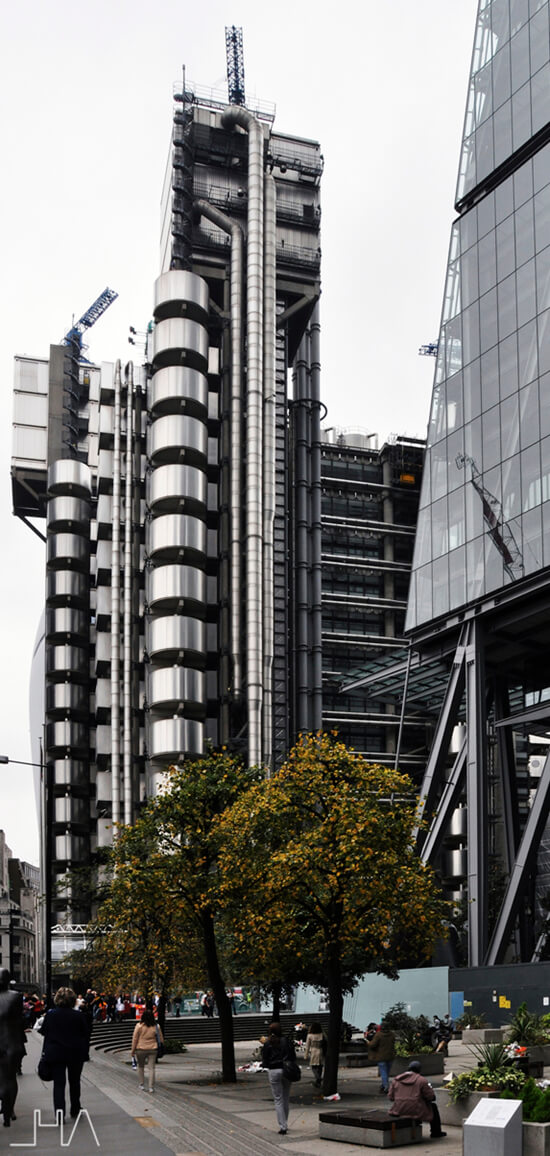City Cluster, City of London
• Drawing 1: "Consolidation of the City Cluster of High Buildings." Courtesy of Foster + Partners, 1998. [1]
- "Drawings like this one from an intermediate planning and design report suggested that the tower would enhance the skyline by completing the “cluster” of towers in the City’s northeastern quadrant."
- (Foster + Partners)
[edit] INTRODUCTION
"The City Cluster comprises an ever densifying and expanding part of the City of London, as evidenced by the ongoing construction of tall architectural towers and an increasing working population which provides a demanding audience on the historic streets and spaces of the Cluster. The public realm must respond to these demands and pressures to enable economic growth and maintain and extend the reputation and attractiveness of the Cluster as a global leader in financial services and reaffirm itself as a destination, both as a workplace and as a cultural attraction beyond the working day. Against this changing backdrop, the public realm must have not only the capacity to accommodate change but also predict and encourage new uses in support of the wider ambitions of the area."
City of London (2019) 'The City Cluster Vision'
[edit] • A glimpse of 'The City Cluster Vision'
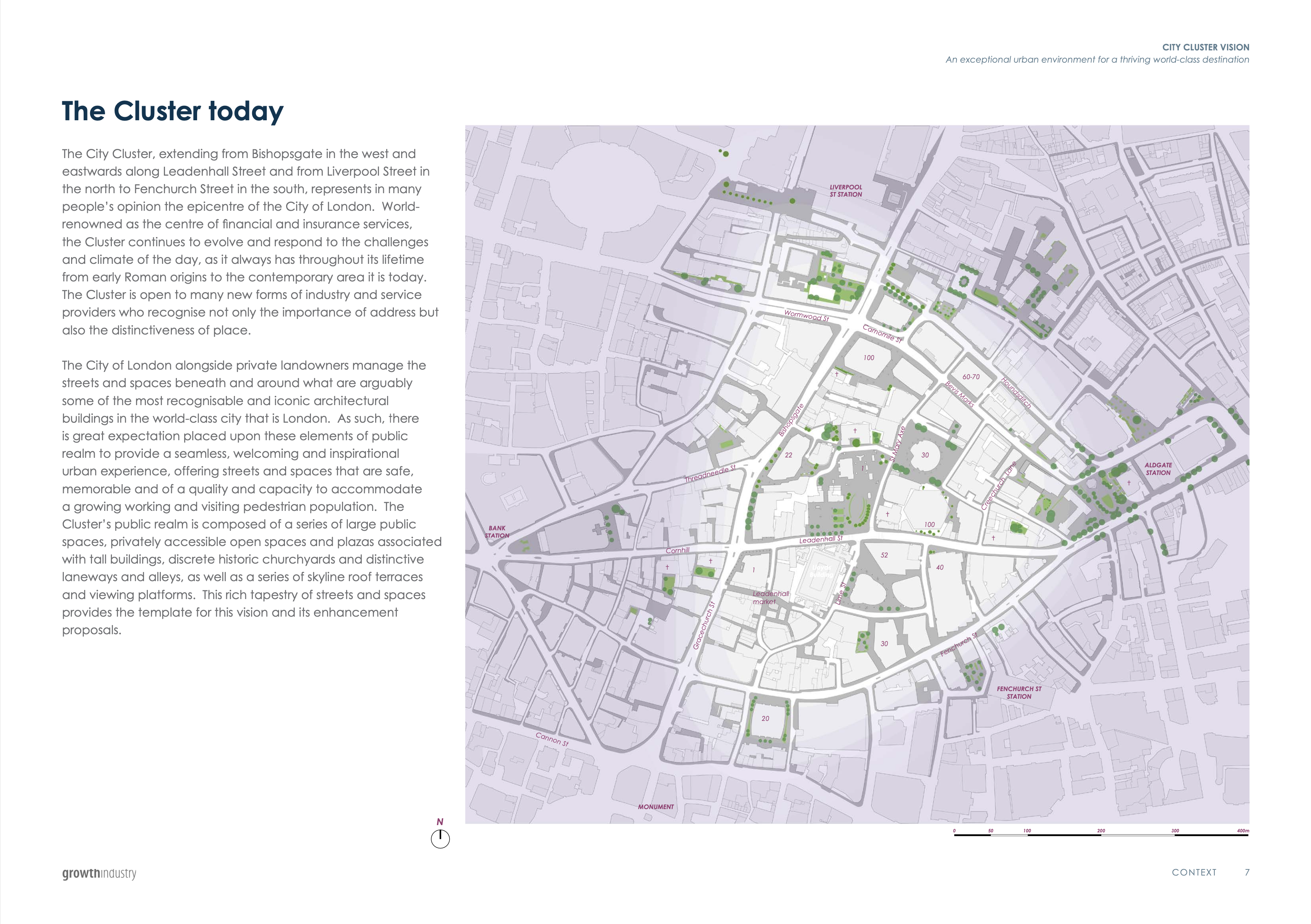
|

|
[edit] • 1600-2021 From Tudor times to the 21st Century
In 2021, Ollie Bye released a video entitled 'The Growth of London: Every Year' which illustrates the growth of London from 47 to 2021. [2]

|

|

|

|

|

|

|

|

|
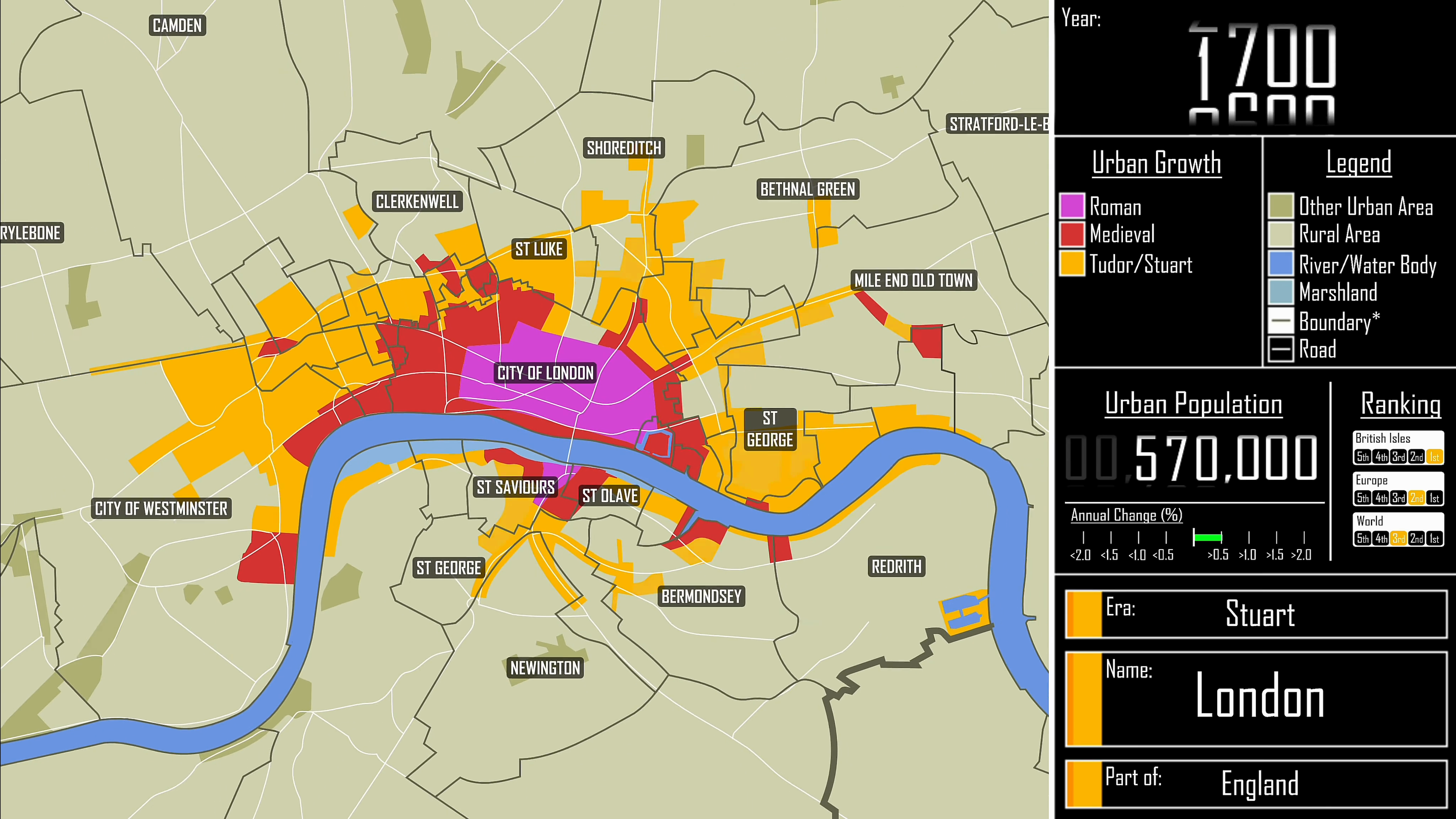
|
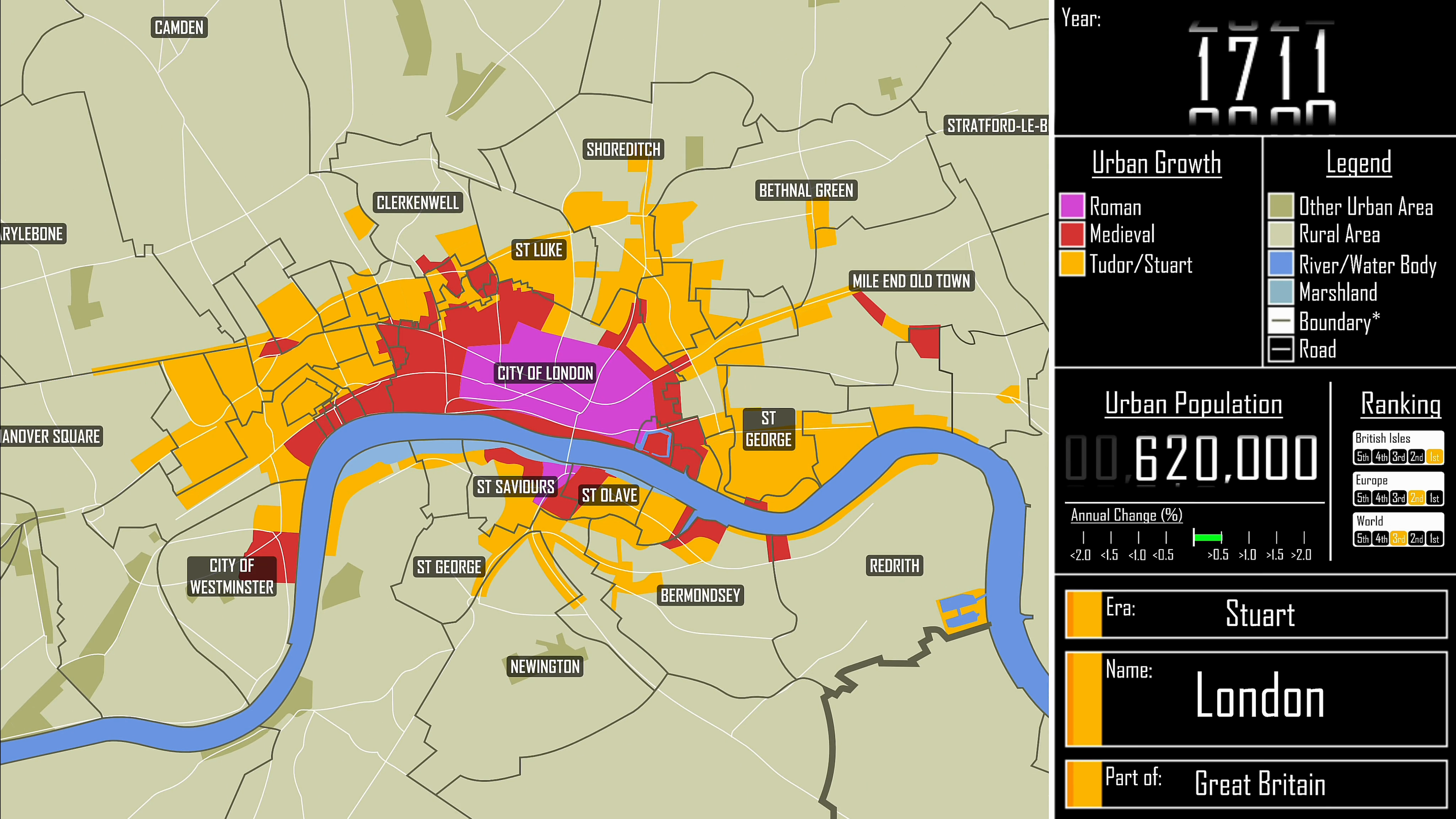
|

|

|

|

|
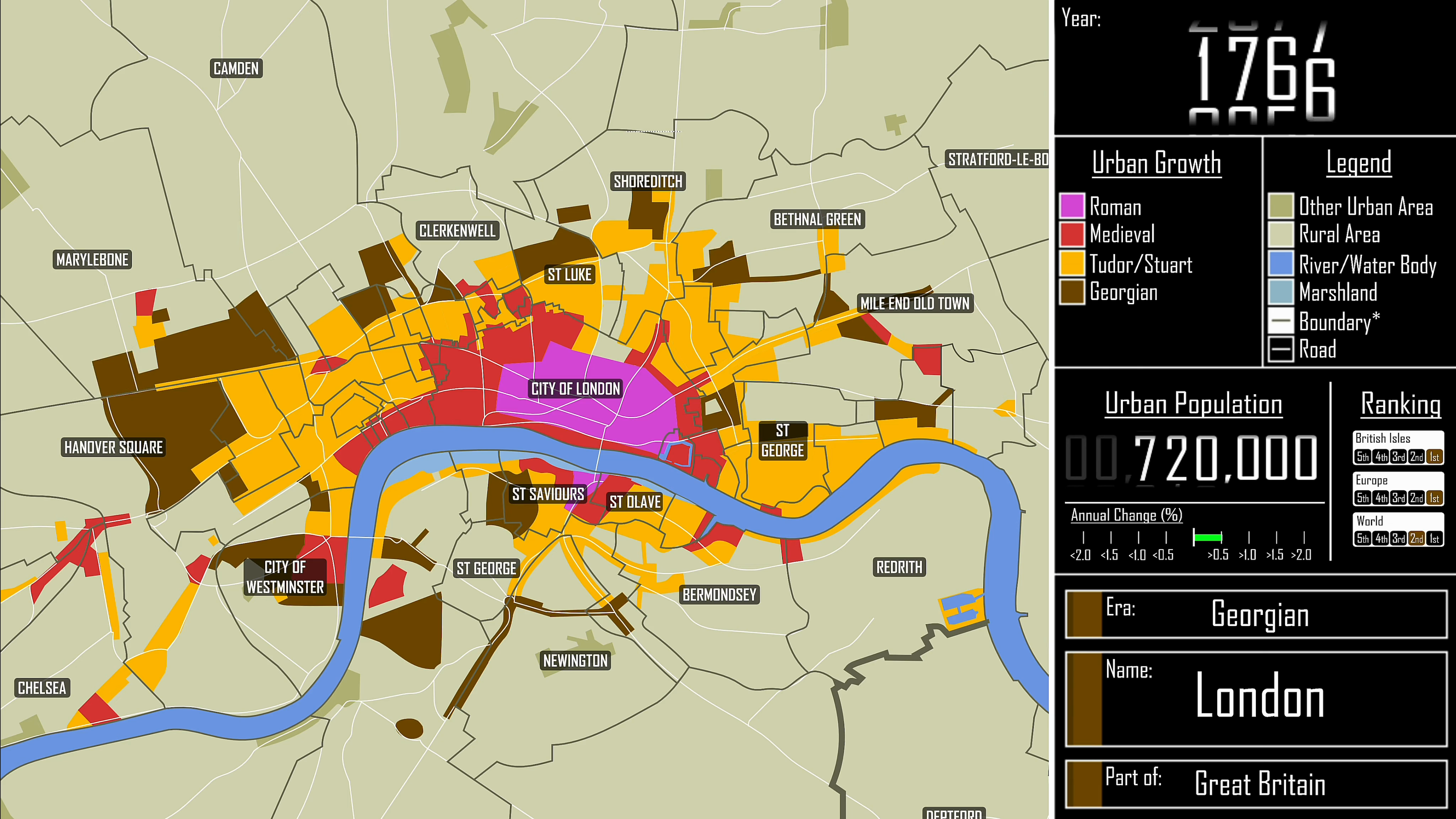
|

|

|

|

|

|

|

|

|

|
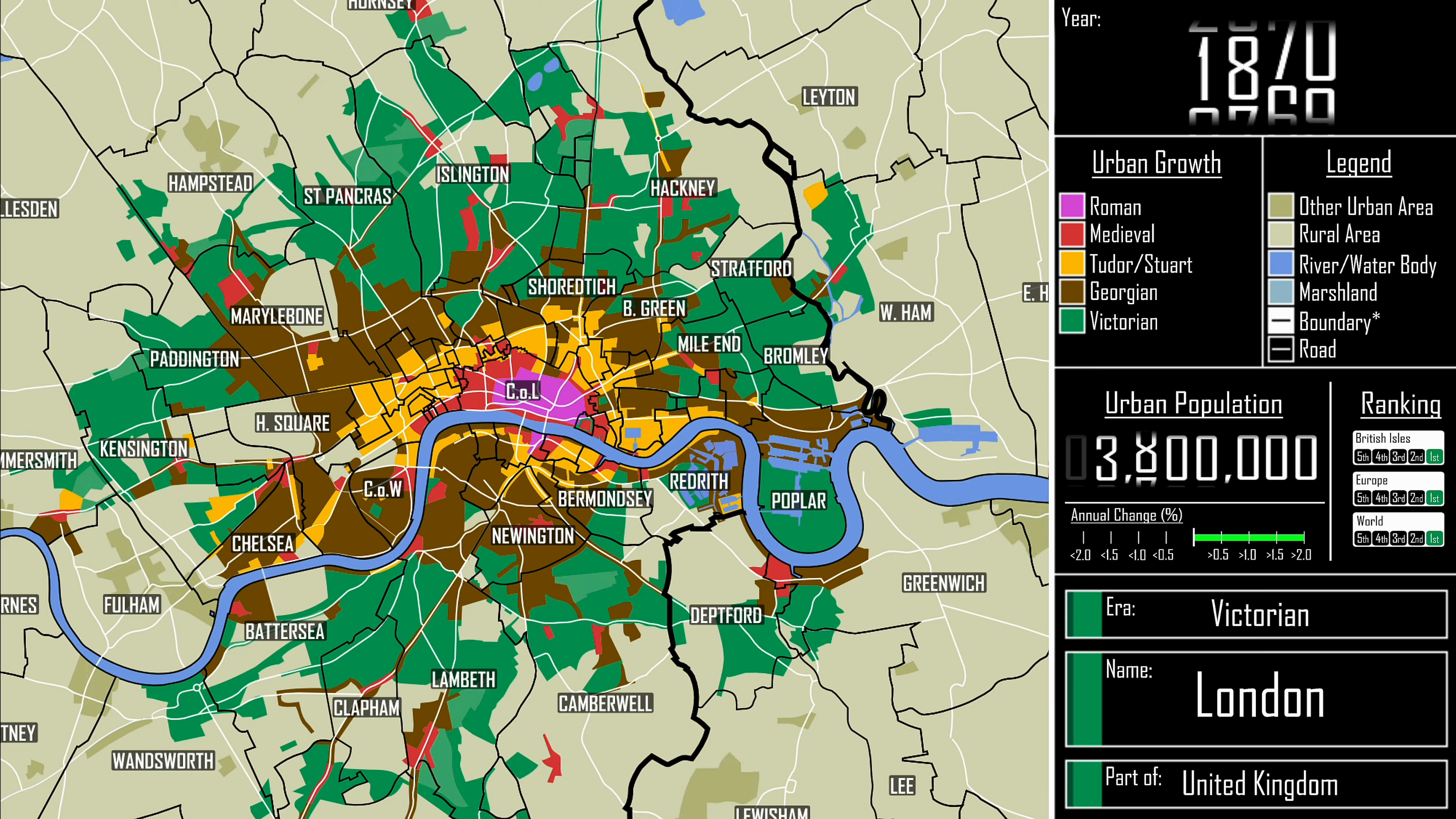
|

|

|
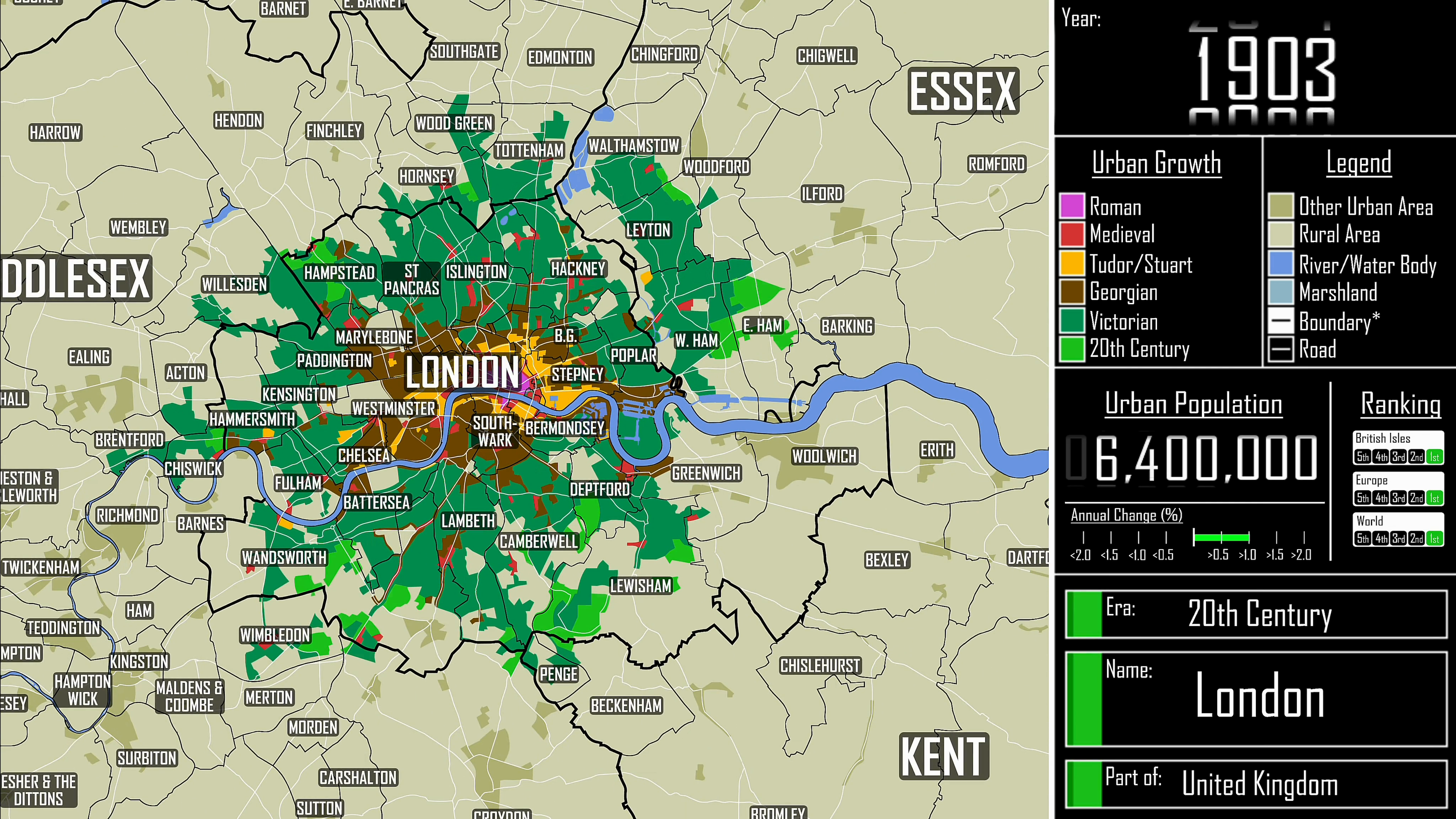
|

|

|

|

|
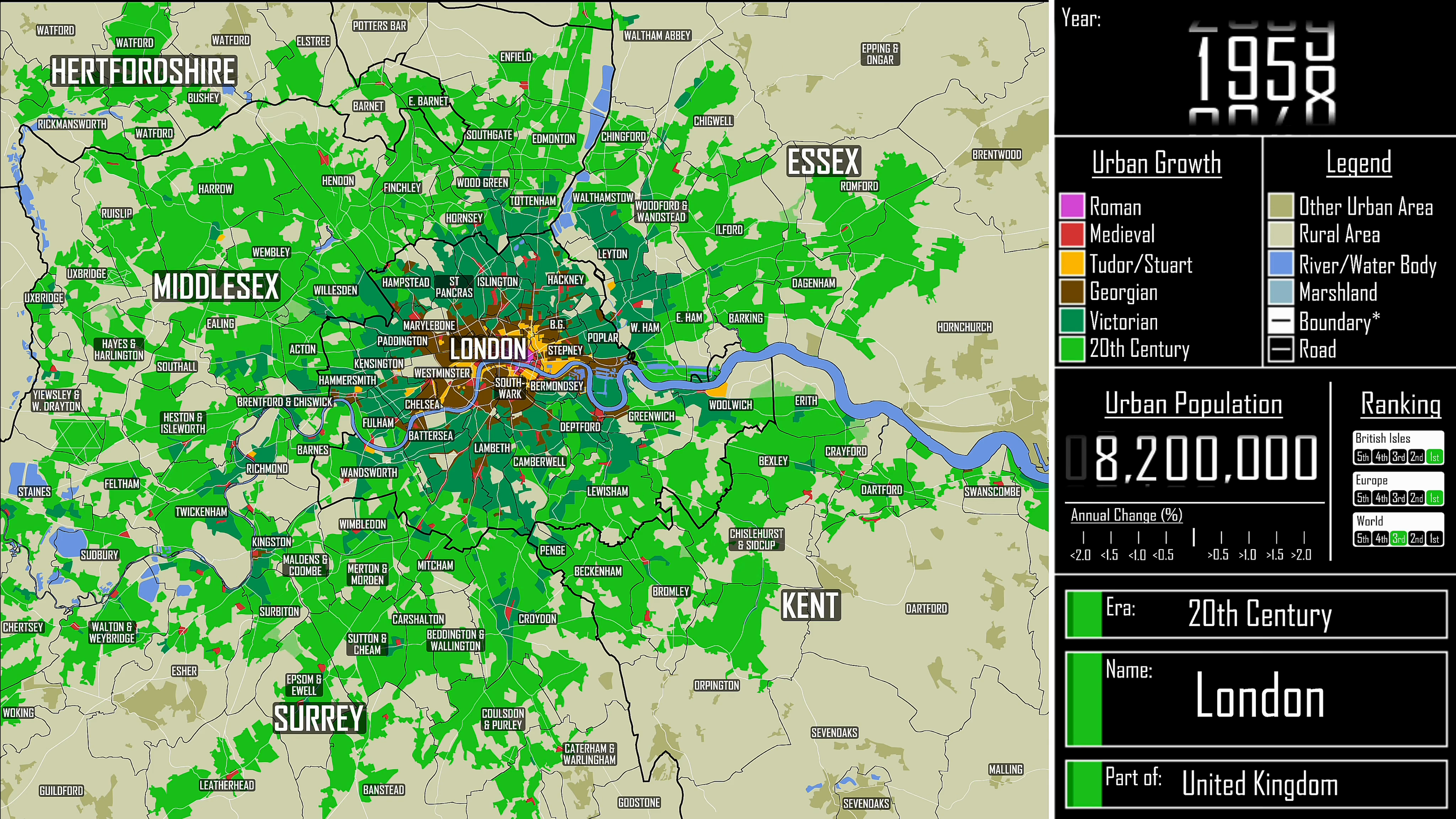
|

|

|

|

|

|

|
• Table 1: Thumbnails of selected frames from Ollie Bye's video outlining the chronological development of London - click to enlarge.
[edit] • City Cluster
[edit] A International Financial CentreHeight: 183m Accommodation: 42 office floors (2 restaurants) Construction period: 1971-1980 Architect: Richard Seifert |
[edit] B 99-101 BishopsgateHeight: 105m Accommodation: 25 office floors Construction period: 1976-1995 Architect: |
[edit] C Swiss Re HouseHeight: 154m Accommodation: 41 floors of office space Construction period: 2001-2004 Architect: Norman Foster |
[edit] D Commercial UnionHeight: 118m Accommodation: 23 floors of office space Construction period: 1992-2003 Architect: Gollins Melvin Ward Partnership |
[edit] E Deutsche BankHeight: 88m Accommodation: Trading floors, office space and retail Construction period: 1995-1996 Architect: Swanke Hayden Connell Architects |
[edit] F Stock ExchangeHeight: 99m Accommodation: in use 1972-2004 Construction period: c1972 Architect: |
[edit] G Angel CourtHeight: 93m Accommodation: Office space Construction period: 1970-present Architect: Fletcher Priest Architects LLP |
[edit] H Drapers' GardensHeight: 99m Accommodation: 30 floors of office space Construction period: c1967 - demolished 2007 Architect: Richard Seifert |
[edit] I Dashwood HouseHeight: 66m Accommodation: 17 floors of office space Construction period: Architect: |
[edit] J Lloyd'sHeight: 84m Accommodation: Office space Construction period: 1981-1986 Architect: Richard Rogers Partnership |
[edit] K Dresdner Kleinwort BensonHeight: 90m Accommodation: Construction period: Demolished 2007 Architect: |
[edit] L Barclays, Lombard St.Height: 86m Accommodation: Construction period: Architect: |
[edit] Conclusion
"We came to the conclusion that in order to have a fully credible financial centre it was necessary to have a fairly complete set of capabilities. Such a complete set within a financial centre’s community is an enabler of innovation. If one piece of iconic infrastructure were missing, the perception of the power of the centre would be significantly diminished. If, therefore, London were to lose several of its major infrastructure providers (say the LSE and LCH.Clearnet), this would undoubtedly have a damaging effect not only upon the credibility of London as Europe’s main financial centre, but also on its overall capacity to support that position."
Cox, P. and Jones, L. (2008) 'The Competitive Impact of London's Financial Market Infrastructure', p.46
[edit] Update
• City of London predicted skyline by 2030, with the 11 new towers expected to be built: 1) 2-3 Finsbury Avenue; 2) 6-8 Bishopsgate; 3: 1 Leadenhall Street; 4) 1 Undershaft; 5) 100 Leadenhall Street; 6) 40 Leadenhall Street; 7) 70 Gracechurch Street; 8) 55 Gracechurch Street; 9) 50 Fenchurch Street; 10) 85 Gracechurch Street; 11) 55 Bishopsgate. Photograph: City of London/GMJ
[edit] References
[1] Foster + Partners (1998) 'Consolidation of the City Cluster of High Buildings' in 'Record Set of Presentation, 19th and 21st October 1998'.
[2] Bye, O. (2021) 'The Growth of London: Every Year', YouTube
City of London (2019) 'The City Cluster Vision'
A International Financial Centre
J Lloyd's
Cox, P. and Jones, L. (2008) 'The Competitive Impact of London's Financial Market Infrastructure', City of London
[edit] Further Reading
Dutta, A. (2012) 'Marginality and Metaengineering: Keynes and Arup', Chapter 10 in 'Governing by Design', University of Pittsburgh Press
Kaika, M. (2010) 'Architecture and Crisis: Re-inventing the Icon, Re-imag(in)ing London and Re-branding the City', ResearchGate
Kollewe, J. (2023) 'London financial district to have 11 more towers by 2030', The Guardian, 2 November
Massey, J. (2013) 'The Gherkin: How London's Famous Tower Leveraged Risk and Became an Icon', archdaily, 5 November
Massey, J. (2013) 'The Gherkin: How London’s Famous Tower Leveraged Risk and Became an Icon (Part 2)', archdaily, 12 November
Massey, J. (2013) 'The Gherkin: How London’s Famous Tower Leveraged Risk and Became an Icon (Part 3)', archdaily, 19 November
Massey, J. (2013) 'The Gherkin: How London’s Famous Tower Leveraged Risk and Became an Icon (Part 4)', archdaily, 26 November
Wainwright, O. and Elmanu, M. (2015) 'A tortured heap of towers': the London Skyline of tomorrow', The Guardian, 11 December
[edit] Related articles on Designing Buildings
- 30 St. Mary Axe.
- After the Fire: London churches in the age of Wren, Hooke, Hawksmoor and Gibbs.
- City Cluster, Kit of Parts.
- Coal holes, pavement lights, kerbs and utilities and wood-block paving.
- Conservation.
- Densification.
- Heritage.
- Historic building.
- IHBC articles.
- London.
- Lloyd's of London.
- NatWest Tower.
- Nikolaus Pevsner.
- Sir Christopher Wren.
- Stuart architecture.
- The Livery Halls of the City of London.
- The Institute of Historic Building Conservation.
- The Rebuilding Acts.
- Worshipful Company of Constructors.
--Archiblog 12:00, 24 Jan 2023 (BST)
Disclaimer:— This article does not reflect the views of the author.
Featured articles and news
Latest Build UK Building Safety Regime explainer published
Key elements in one short, now updated document.
UKGBC launch the UK Climate Resilience Roadmap
First guidance of its kind on direct climate impacts for the built environment and how it can adapt.
CLC Health, Safety and Wellbeing Strategy 2025
Launched by the Minister for Industry to look at fatalities on site, improving mental health and other issues.
One of the most impressive Victorian architects. Book review.
Common Assessment Standard now with building safety
New CAS update now includes mandatory building safety questions.
RTPI leader to become new CIOB Chief Executive Officer
Dr Victoria Hills MRTPI, FICE to take over after Caroline Gumble’s departure.
Social and affordable housing, a long term plan for delivery
The “Delivering a Decade of Renewal for Social and Affordable Housing” strategy sets out future path.
A change to adoptive architecture
Effects of global weather warming on architectural detailing, material choice and human interaction.
The proposed publicly owned and backed subsidiary of Homes England, to facilitate new homes.
How big is the problem and what can we do to mitigate the effects?
Overheating guidance and tools for building designers
A number of cool guides to help with the heat.
The UK's Modern Industrial Strategy: A 10 year plan
Previous consultation criticism, current key elements and general support with some persisting reservations.
Building Safety Regulator reforms
New roles, new staff and a new fast track service pave the way for a single construction regulator.
Architectural Technologist CPDs and Communications
CIAT CPD… and how you can do it!
Cooling centres and cool spaces
Managing extreme heat in cities by directing the public to places for heat stress relief and water sources.
Winter gardens: A brief history and warm variations
Extending the season with glass in different forms and terms.
Restoring Great Yarmouth's Winter Gardens
Transforming one of the least sustainable constructions imaginable.


















